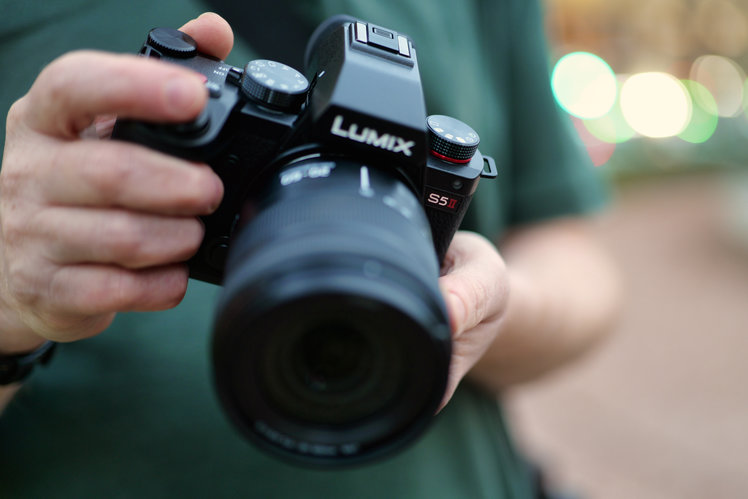
We were seriously impressed with the Lumix S5 when it launched back in 2020, and now Panasonic is back with a new and improved version.
To be clear, the S5II isn’t replacing the S5, but will instead be available alongside it as a more premium option.
As much as we love the brand’s cameras, there’s been one ever-present issue with Panasonic’s offerings: the lacklustre autofocus performance.
That all changes with the S5II, and the introduction of its new phase hybrid autofocus system.
So, has Panasonic hit the nail on the head and created one of the best cameras to buy today? On paper, it certainly seems like it.
We got the chance to take the new camera on a stroll around the picturesque streets of Valencia, and here’s what we found out.
Design
- Dimensions: 134.3 x 102.3 x 90.1 mm
- Weight: 740g
- New 8-direction joystick
The S5II has a very similar look and feel to its predecessor. The button layout remains unchanged, as do the materials and colours used on the camera’s body.
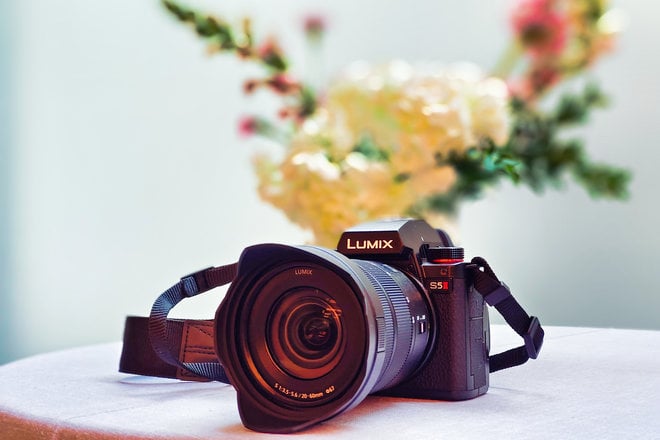
The spec sheet tells us that it’s actually slightly larger in all dimensions, as well as being about 26 grams heavier, but if you aren’t holding them side by side, you’d never be able to tell. The only obvious change is the S5II badge on the front of the camera.
Most of the changes are performance-oriented and found on the inside of the camera, with the exception of a new 8-direction joystick. This is found in the same position as the 4-direction joystick on the original S5.
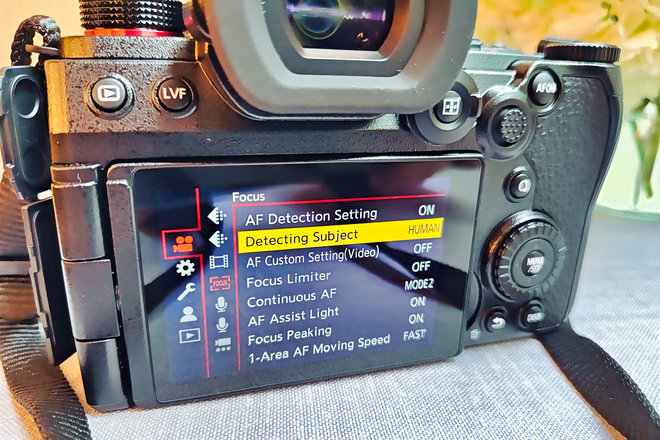
We tend to use the touchscreen more frequently than the joystick, but if you spend a lot of time looking through the EVF, you’ll no doubt be pleased with this improvement. We believe it can also be assigned to eight function buttons, but this wasn’t something that we had time to try during our quick session with the camera.
Connectivity and displays
- Full-size HDMI, USB-C, Headphone and Mic sockets
- Dual SD card slots, 1x UHS-II and 1x UHS-I
- 3,680k OLED LVF and 1,840k flip-out LCD
Starting with connectivity, things remain functionally very similar, as well. Thankfully, though, this model ditches the micro HDMI in favour of a full-sized HDMI port – very welcome news for those who use an external monitor.
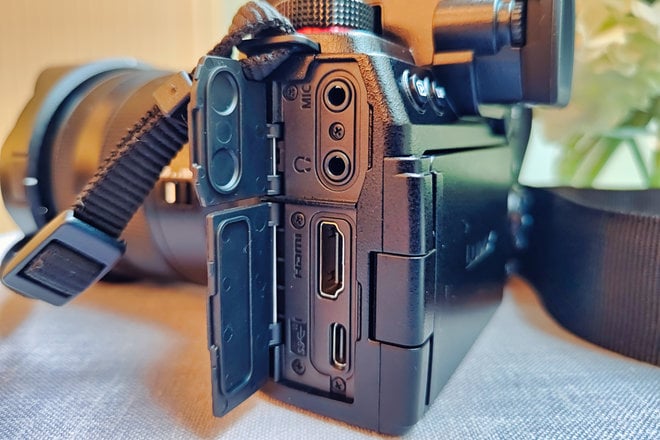
There’s a USB-C port which has been upgraded to USB 3.2, and separate 3.5mm headphone and mic sockets. When the screen is flipped out, neither of the 3.5mm jacks or USB-C get in the way of the articulation – however, the HDMI will get blocked, which is no big deal in the majority of cases.
Around the other side, we find dual SD card slots, just like the S5. These have been upgraded, too, both are now UHS-II compatible, whereas the S5 only features a single UHS-II slot.
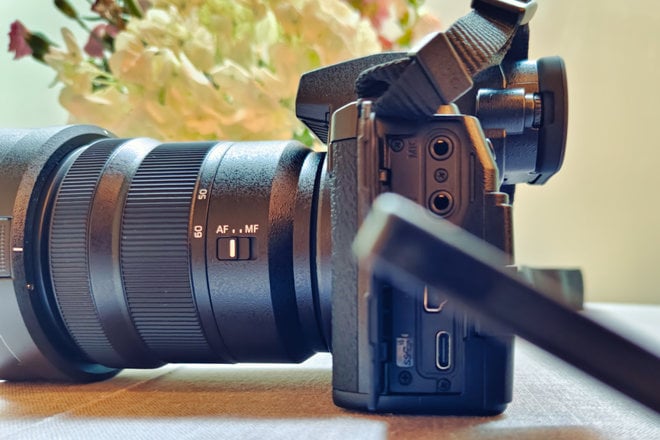
The other big news is a new and improved OLED EVF. This looks great, it’s very sharp and smooth, and it made it very easy to dial in our settings and frame our shots. We weren’t able to test it side-by-side with the S5, so it’s hard to say exactly how much it has improved, but from memory, this is certainly a step up.
The flip-out LCD appears to be the same as its predecessor, but no complaints there, it’s very responsive and is easy to see in a variety of lighting conditions.
Photo performance
- New 24.2MP sensor with IBIS and Active I.S.
- Phase hybrid AF, 779-point
- Up to 30fps burst shooting with 200 frame buffer
We were really pleased with the photos we were able to capture on the Lumix S5II. The images are sharp and detailed, while the colours are natural and lifelike. The RAW files hold up to some serious colour grading, and the JPEGs don’t fare too poorly, either.
Shooting on the S5II is a breeze, the new autofocus is fast and reliable and the subject tracking works excellently, even in challenging conditions like a busy city street. We had a little less luck with animal eye detection and some pigeons, but they weren’t staying still for very long at all – human detection was near-flawless.
We should note that we were testing a pre-release firmware, too, so there’s every chance that the autofocus system will be tweaked and improved prior to the retail launch. We’ll be sure to do some more thorough testing once we can get our mitts on a production sample.
Being long-time users of cameras like the GH5, we found the menu system and button layout to be familiar and intuitive. One of Panasonic’s strongest features is the degree to which you can configure and remap buttons to suit your specific needs, and we’re massive fans of this. Though, for those less familiar with the system, we can imagine the sheer breadth of options being a little overwhelming.
We were extremely impressed with the upgraded image stabilisation system, and though it may be of the most benefit to video shooters, it’s excellent for photography, too. We were able to take up to one-second long exposure shots, handheld, with tack-sharp results. Impressive stuff.
Most of our shooting was during the daytime, or with well-lit interiors, so we didn’t get to push the ISO too far, but early signs are looking good. Shots at ISO 3200 are still very clean and usable, with only a slight increase in graininess.
A key feature of the S5II is its ability to shoot at up to 30fps bursts with the electronic shutter. This is a massive improvement over the meagre 7fps offered by the S5, but it was another thing that we didn’t have much opportunity to play with. After all, photos of architecture don’t really require such bursts. We’re looking forward to playing with this more on the final sample.
Video performance
- 6K recording at up to 30fps in 4:2:0 10-bit
- 4K recording at up to 60fps in 4:2:2 10-bit
- Unlimited recording time and onboard LUTs
During the few hours we spent with the camera, we didn’t dive too deeply into the video functionality, but the small amount of footage that we captured looks excellent.
The stabilisation is great, the autofocus is brilliant, especially when it comes to tracking faces, and there’s a wealth of resolutions, bit rates and codecs to choose from.
You don’t get Apple ProRes options on the S5II, but there’s another version, the S5IIX, launching around June 2023 that will have these included. It’ll cost a bit extra but otherwise seems to be an almost identical camera.
We were a little disappointed that there are no high-frame rate 4K options (except for 60fps) but if you want slow motion, you can drop down to 1080p and shoot at up to 180fps.
The resolutions and frame rates that support 4:2:2 10-bit colour have been expanded significantly on this model, and that includes Cinema 4K at 60fps.
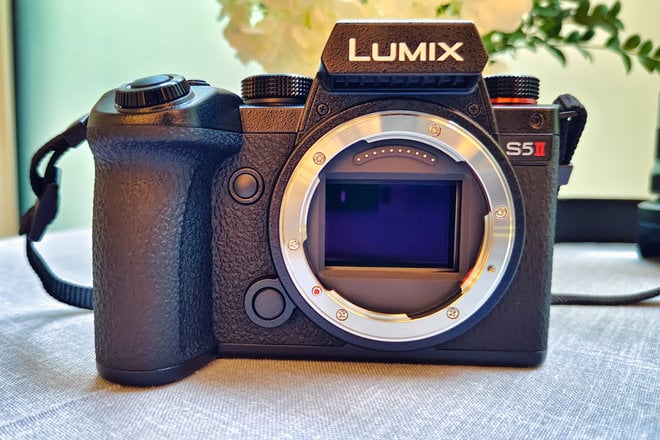
There are no recording limitations whatsoever, and the cooling has apparently been tested at 40 degrees Celsius, which is far too warm for our British bodies. So, hopefully, we won’t be seeing any temperature warnings that so often plague high-spec mirrorless shooters.
The S5II’s internal audio recording now supports up to 96kHz / 24-bit LPCM and can record four-track audio, when used with Panasonic’s XLR adapter.
